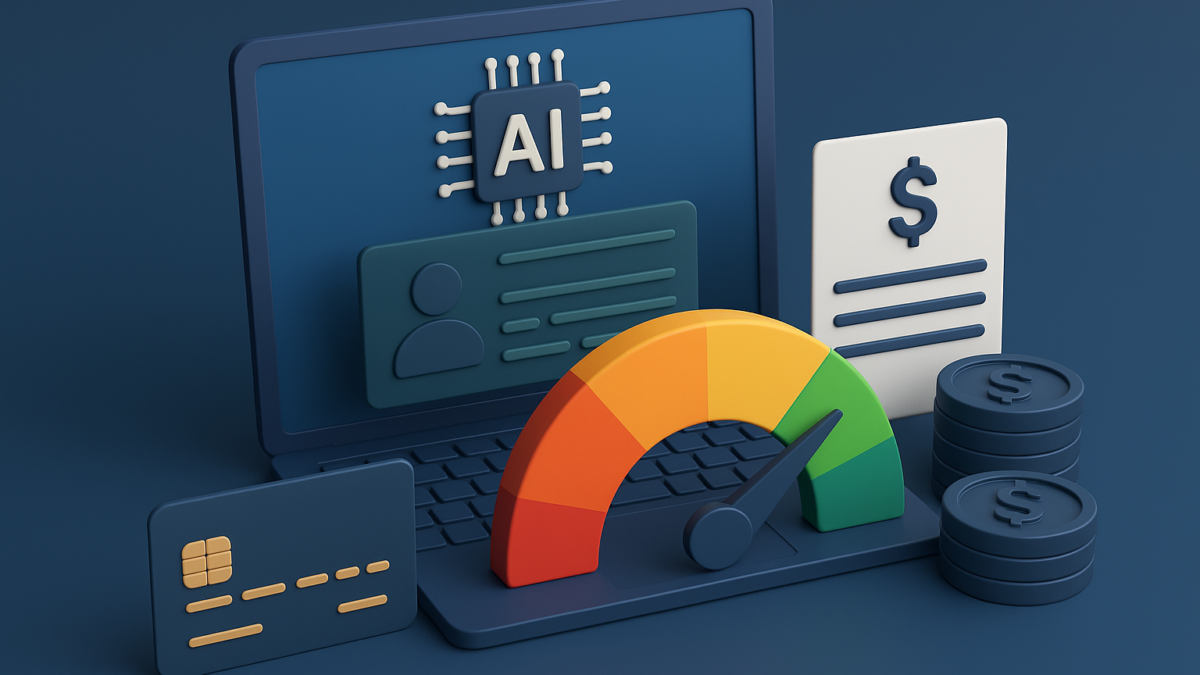AI-Driven Credit Scoring: The Future of Risk Assessment in FinTech
Introduction: Credit Scoring at a Crossroads
For decades, credit scoring has determined who gets access to loans, mortgages, and credit lines. Traditional systems like FICO scores relied heavily on a narrow set of data—payment history, outstanding debt, and credit length. While functional, these models often excluded large segments of the population and failed to capture the true financial health and intent of borrowers.
In 2025, AI-driven credit scoring is transforming this landscape. FinTech companies are leveraging machine learning and alternative data sources to make faster, fairer, and more inclusive risk assessments. The future of lending will no longer depend on outdated models but on intelligent, adaptive systems that understand the bigger financial picture.
Why Traditional Credit Scoring Falls Short
- Limited Data Points: Traditional models rely on past borrowing behavior, ignoring broader financial signals.
- Exclusion of the Unbanked: Millions remain “credit invisible” due to lack of traditional history.
- Inflexibility: Static models fail to adapt to real-time financial changes.
- Bias Risks: Certain demographic groups are disproportionately penalized, leading to inequitable access to credit.
These gaps highlight the urgent need for innovation in risk assessment.
How AI-Driven Credit Scoring Works
AI credit scoring systems go beyond the basics, incorporating machine learning models and diverse datasets to evaluate risk more accurately.
Key Components:
- Alternative Data Sources
- Utility payments, rent history, mobile payments
- Employment records and education background
- Behavioral data (e.g., digital transactions, spending habits)
- Machine Learning Models
- Identify patterns in borrower behavior that humans or traditional algorithms may miss.
- Continuously learn and update scoring as new data flows in.
- Real-Time Assessment
- AI can score applicants instantly, reducing processing times from days to minutes.
- Explainable AI (XAI)
- Ensures transparency so borrowers and regulators understand why a score was assigned.
Benefits of AI-Driven Credit Scoring
1. Improved Accuracy
Machine learning models process far more variables, creating a more nuanced risk profile.
2. Financial Inclusion
By using alternative data, AI enables credit access for millions of underbanked individuals previously excluded from traditional systems.
3. Faster Decision-Making
Automated credit scoring reduces manual reviews, accelerating loan approvals and customer satisfaction.
4. Reduced Fraud
AI can detect anomalies and potential fraud patterns in real-time, safeguarding financial institutions.
5. Dynamic Updates
Unlike static credit scores, AI-driven models adapt as financial circumstances change, offering a real-time reflection of risk.
Real-World Applications in FinTech
Microfinance & Emerging Markets
FinTech startups in India and Africa use AI-driven scoring to assess borrowers with no traditional credit history, relying on mobile payment and telecom data.
Neo-Banks
Digital banks integrate AI models to offer instant credit lines to new customers based on spending patterns and transaction behavior.
Insurance Underwriting
AI scoring extends beyond lending—insurers now assess policy applicants’ risk profiles using similar models.
SME Lending
Small and medium-sized businesses benefit from AI systems that evaluate cash flow, supplier payments, and invoices to determine creditworthiness.
Challenges and Considerations
While promising, AI-driven credit scoring isn’t without challenges:
- Data Privacy Concerns: Using alternative data requires strict compliance with laws like GDPR and India’s DPDP Act.
- Algorithmic Bias: Poorly trained models risk perpetuating discrimination if biases exist in input data.
- Transparency Issues: Black-box models may make it hard to explain decisions to customers or regulators.
- Regulatory Scrutiny: Financial regulators demand accountability and fairness in lending practices.
For adoption to scale, FinTechs must ensure AI systems are ethical, explainable, and compliant.
The Future of Risk Assessment in FinTech
Looking forward, AI will redefine credit scoring in several ways:
- Global Credit Passports: Unified AI-driven credit profiles portable across borders.
- Blockchain Integration: Immutable records of borrower behavior enhancing trust and security.
- Continuous Scoring Models: Real-time credit monitoring instead of static annual updates.
- Hybrid Human-AI Decisions: AI handles volume; humans oversee fairness and ethics.
- Predictive Credit Ecosystems: Anticipating borrower challenges before defaults happen.
In this future, AI-driven scoring won’t just assess risk—it will manage and predict it proactively.
Final Thoughts
AI-driven credit scoring represents a seismic shift in FinTech. By blending machine learning with alternative data, it offers faster, fairer, and more inclusive lending opportunities. For financial institutions, the result is better risk management. For borrowers, it means greater access and transparency.
As AI continues to evolve, the winners in FinTech will be those who embrace responsible, data-driven credit scoring systems—balancing innovation with trust.
Call-to-Action (CTA)
Want to learn more about how AI is transforming financial services?
Explore our B2B Content Syndication Services to ensure your FinTech insights reach the right decision-makers and drive engagement in 2025.
You May Also Like: Whitepapers and the Trust Economy: Building Credibility in a Skeptical B2B World





